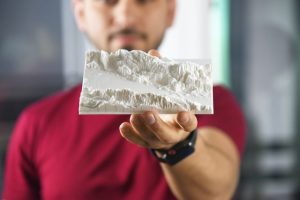
Extrusion is an underlying concept used in many 3D printing applications. Although there are different types of 3D printers, many of them are designed to extrude material. The raw material is forced through a nozzle before being released onto a print bed. While extrusion is used in a myriad of manufacturing-related applications, it’s a key concept of 3D printing. To learn more about the role extrusion plays in 3D printing applications, keep reading.
What Is Extrusion?
Extrusion is defined as the process of forcing material through a die with a cross-sectional pattern. The material is typically heated beforehand so that it becomes more pliable. After the material is heated, it’s forced through the die. When this occurs, the material takes the shape of the die, thereby allowing for the creation of objects in complex shapes.
There are many different classifications of extrusion. Hot extrusion, for example, is the most common type. It involves heating the material before forcing it through a die. Cold extrusion, on the other hand, involves forcing the material through a die at or near room temperature. There’s also warm extrusion that exposes the material to a temperature below that of its melting point.
How 3D Printers Use Extrusion
In fused filament fabrication (FFF), as well as other 3D printing applications, extrusion is used to prepare the material from which the constructed objects are built. FFF 3D printers feature a nozzle with a cross-sectional die. Prior to being released onto a print bed, the raw material is heated within the FFF 3D printer. It’s then forced through the printer’s nozzle where it’s extruded.
Why do FFF 3D printers extrude material exactly? The main reason FFF 3D printers use extrusion is to ensure that each drop of material is the same as the next. Whether it’s an FFF or any other type of 3D printer, it must release an even and consistent amount of material. If one drop of material is larger in volume — or a different size — than the next drop, the finished object won’t have the appropriate dimensions. Therefore, 3D printers extrude material out of a nozzle before releasing it onto a print bed. As the material is forced through the 3D printer’s nozzle, it achieves uniformity.
In Conclusion
Many manufacturing applications use extrusion, and 3D printing is no exception. Extrusion is used in 3D printing to ensure an even and consistent amount of material is deposited onto the print bed.
Do you have a prototype that has been stuck in your head? We can help get it out of your head and into your hands with our 3D printing portal.
